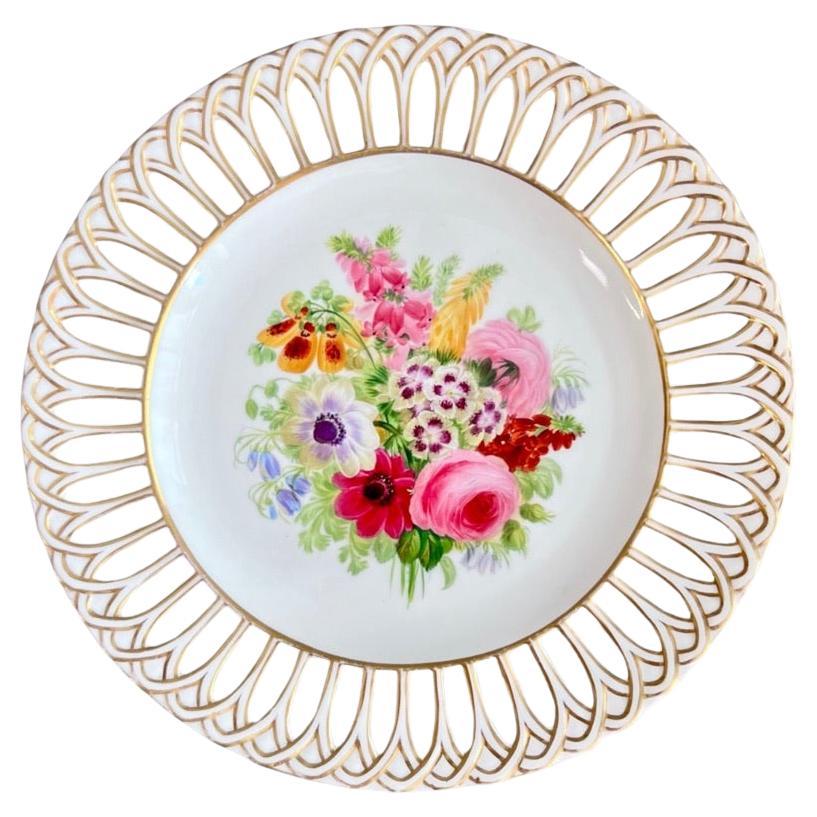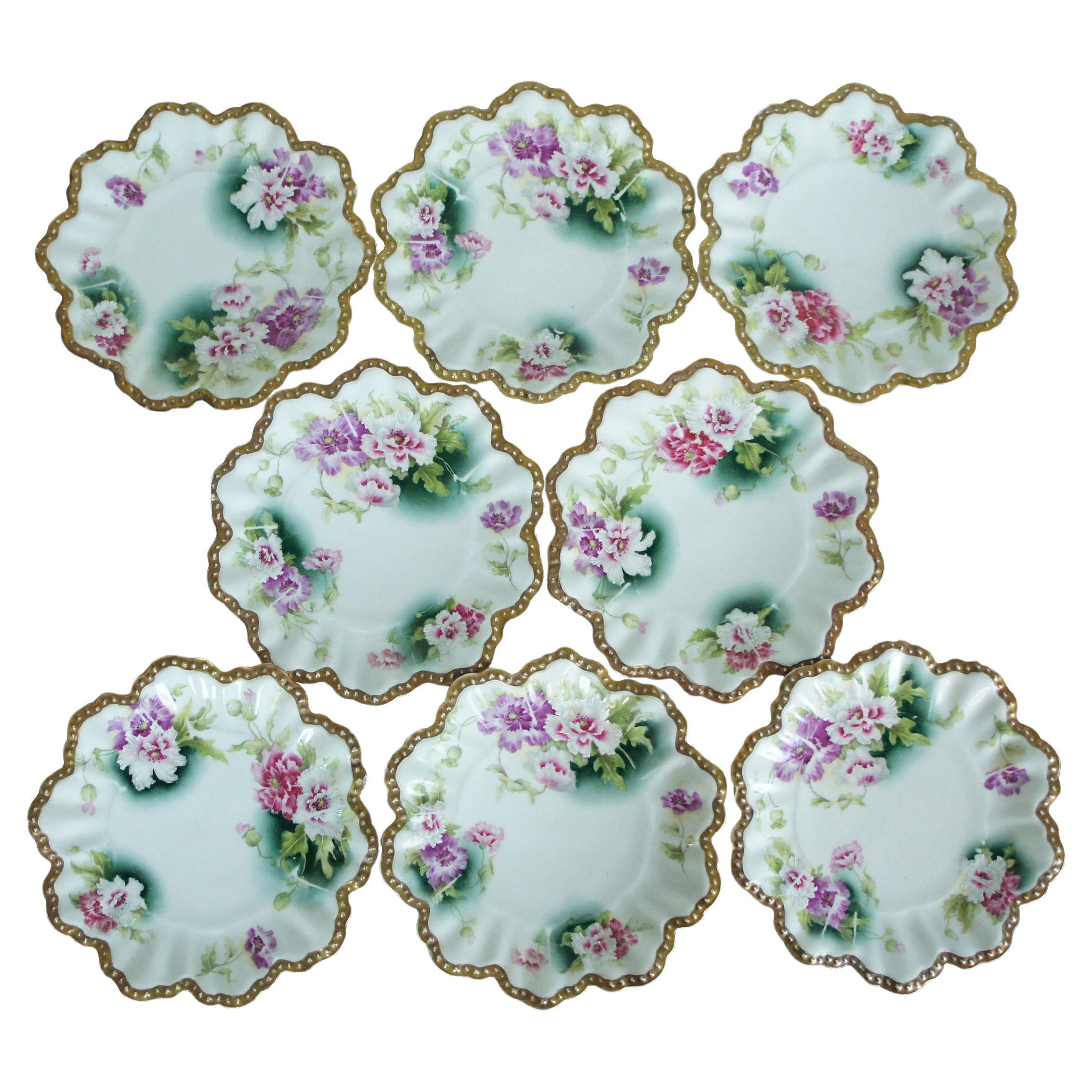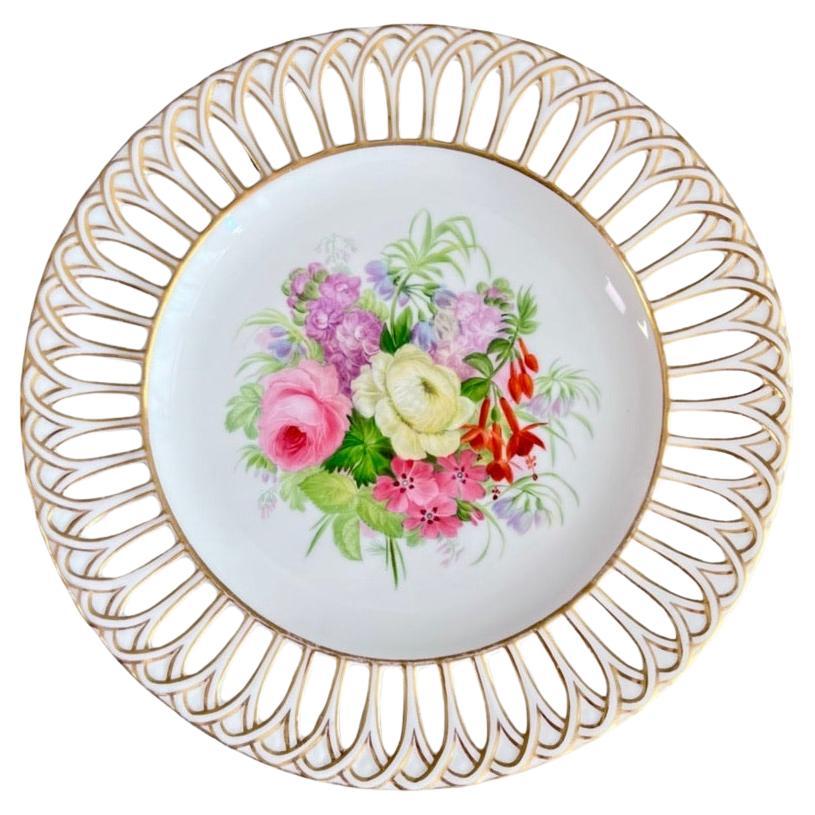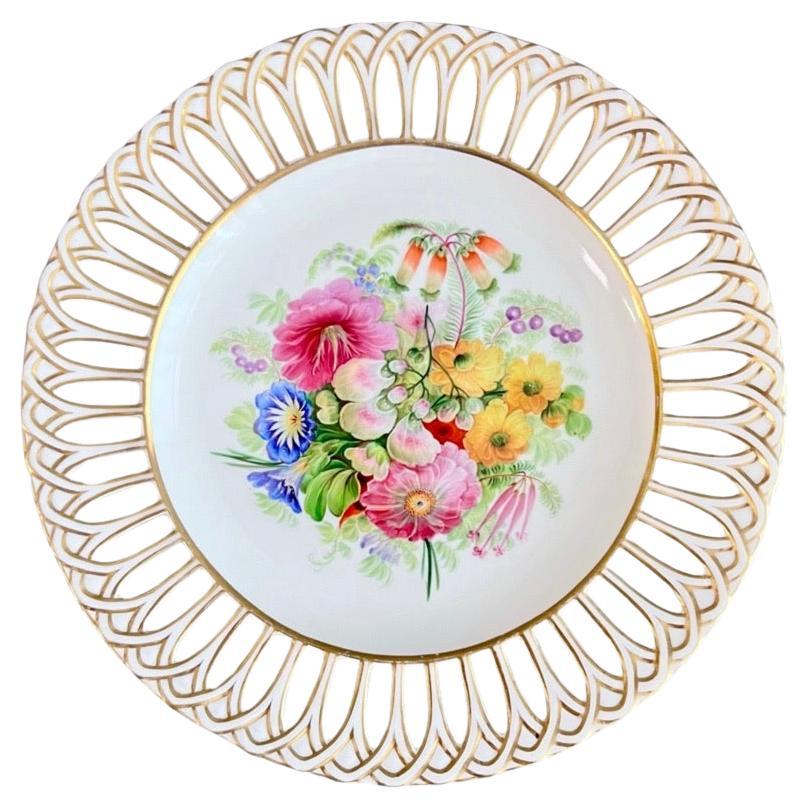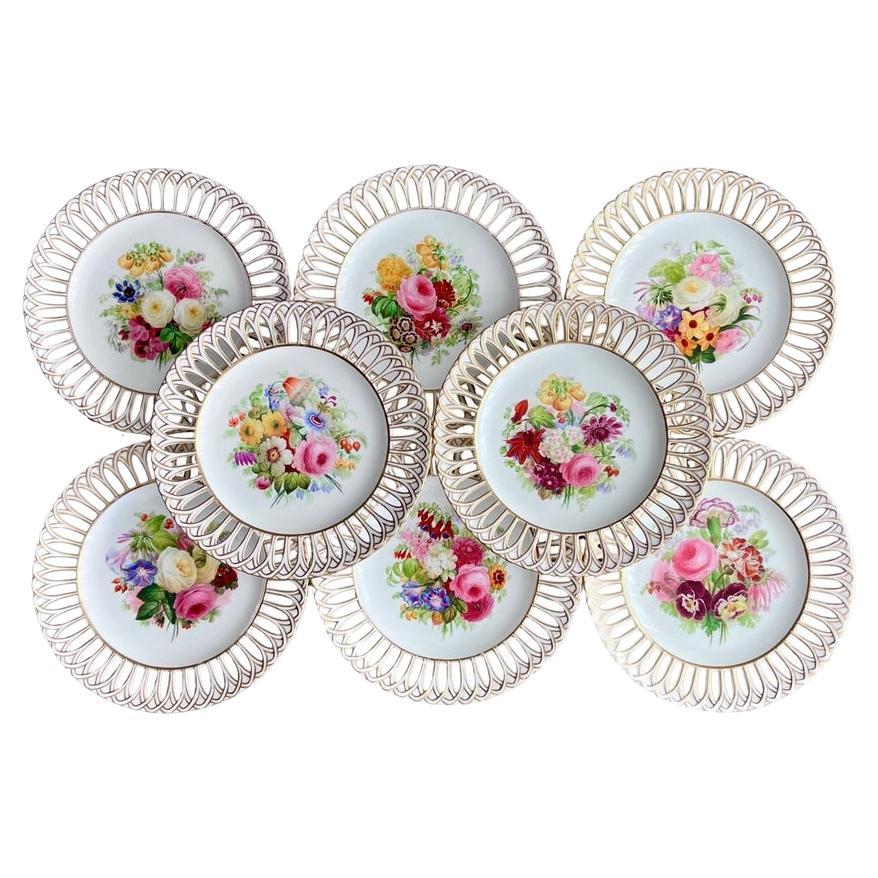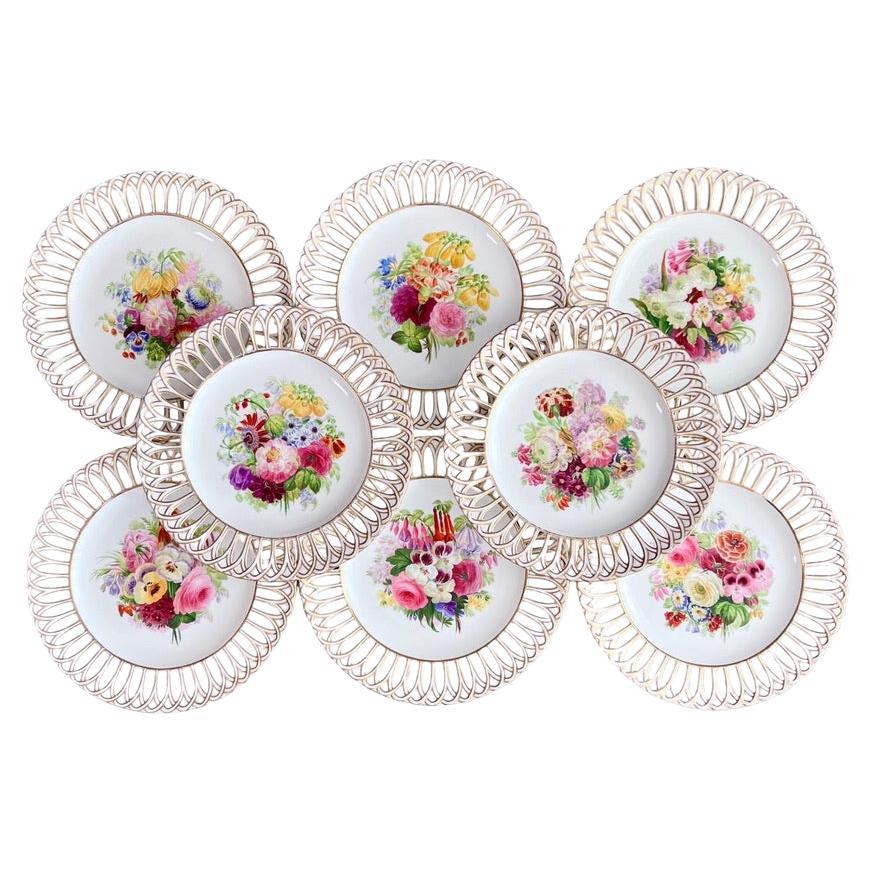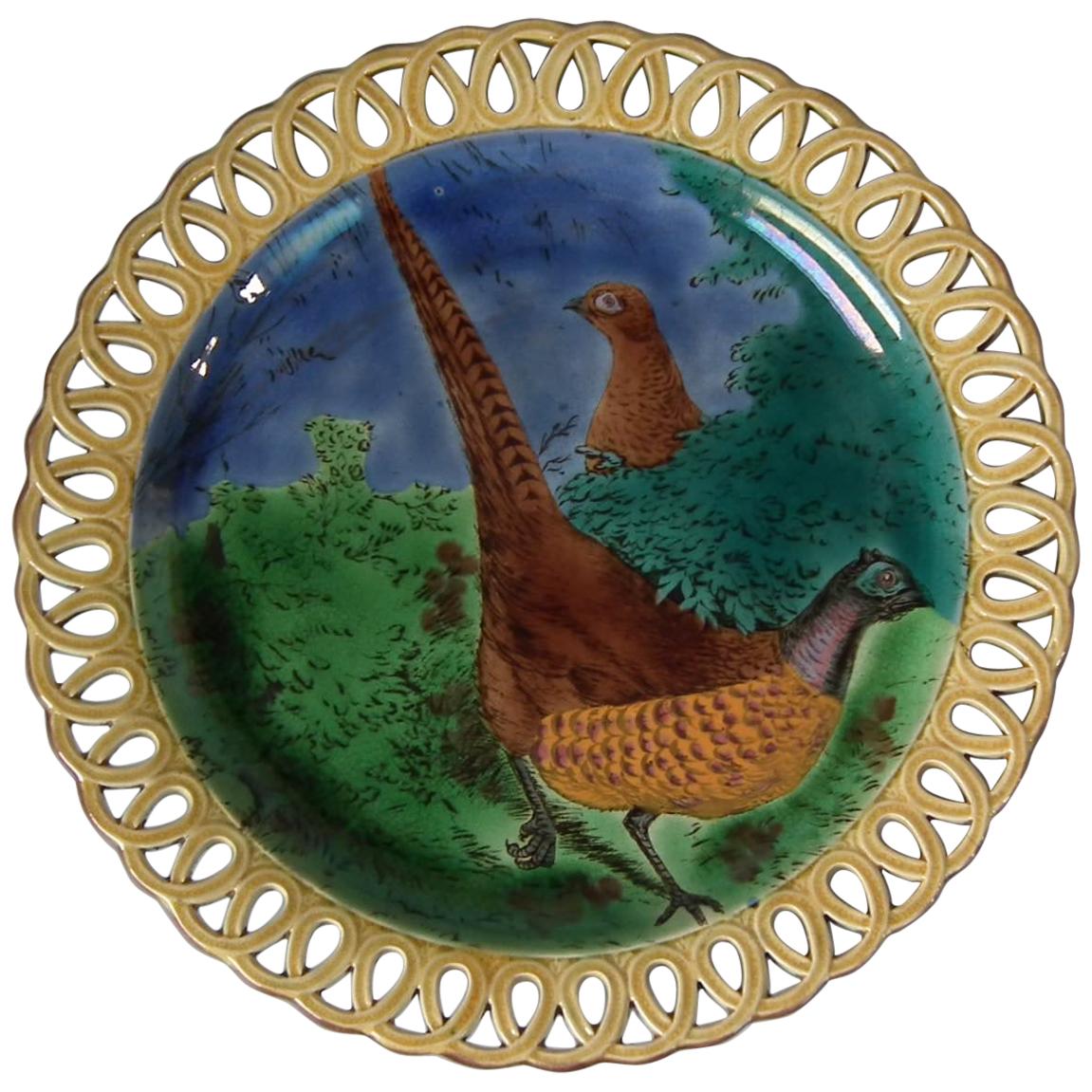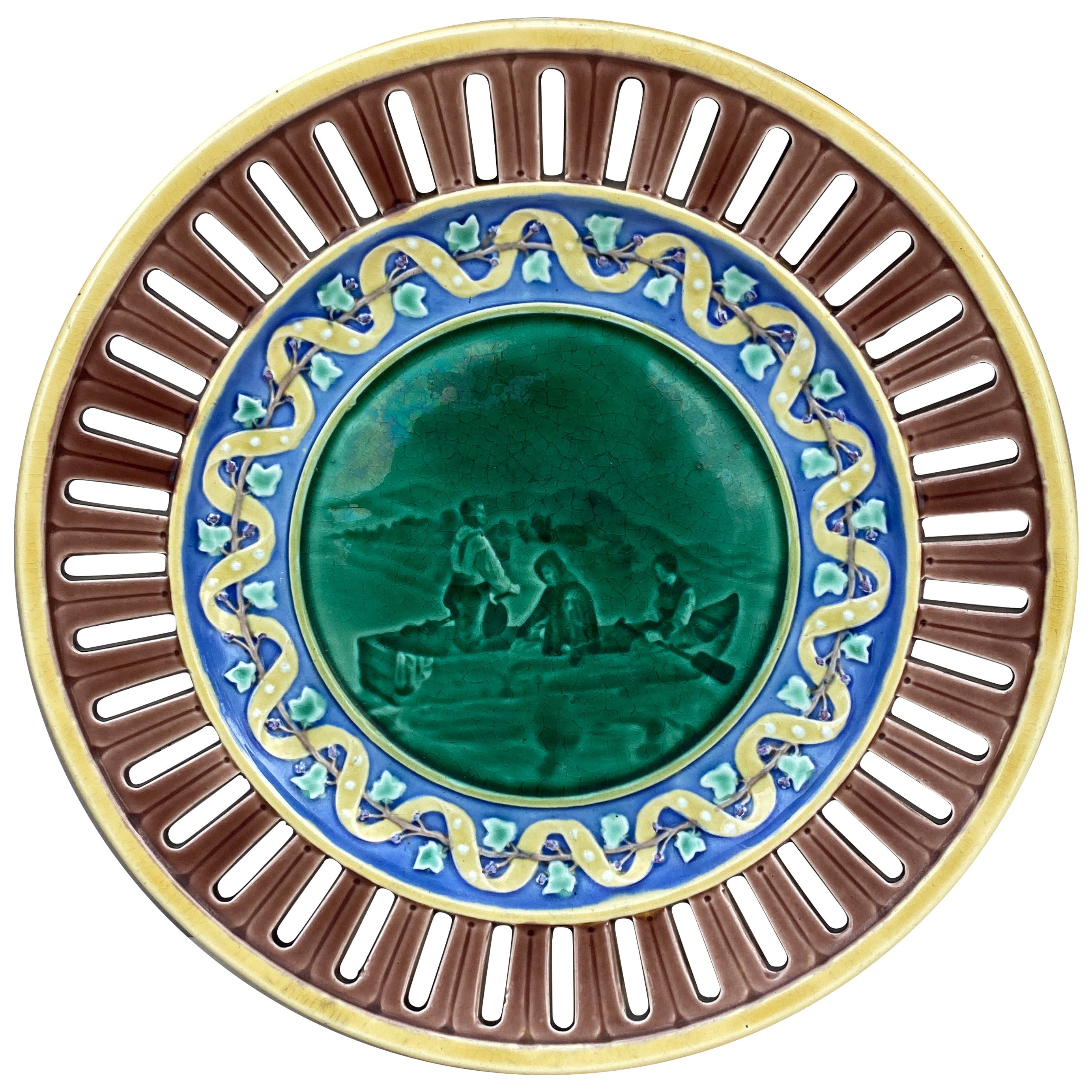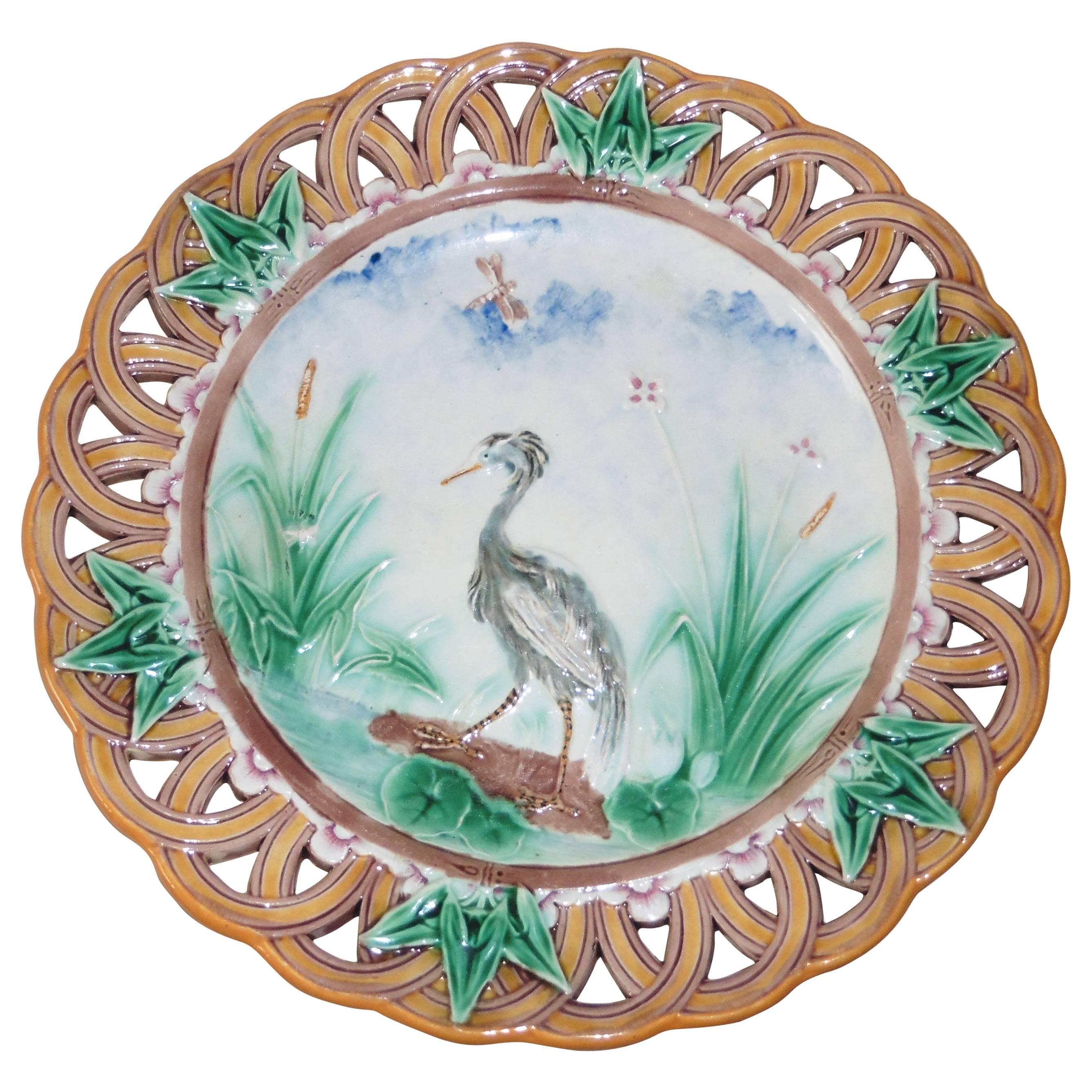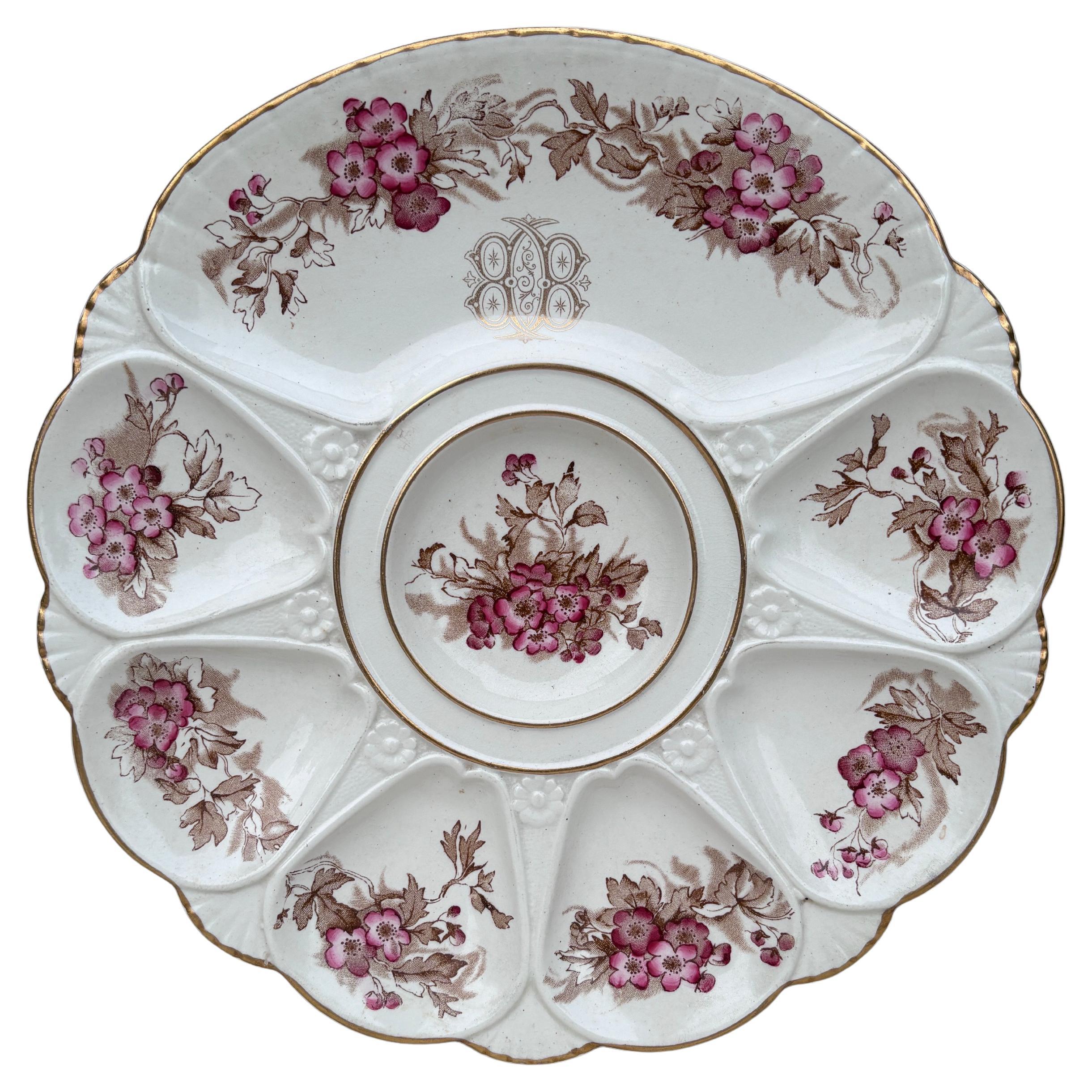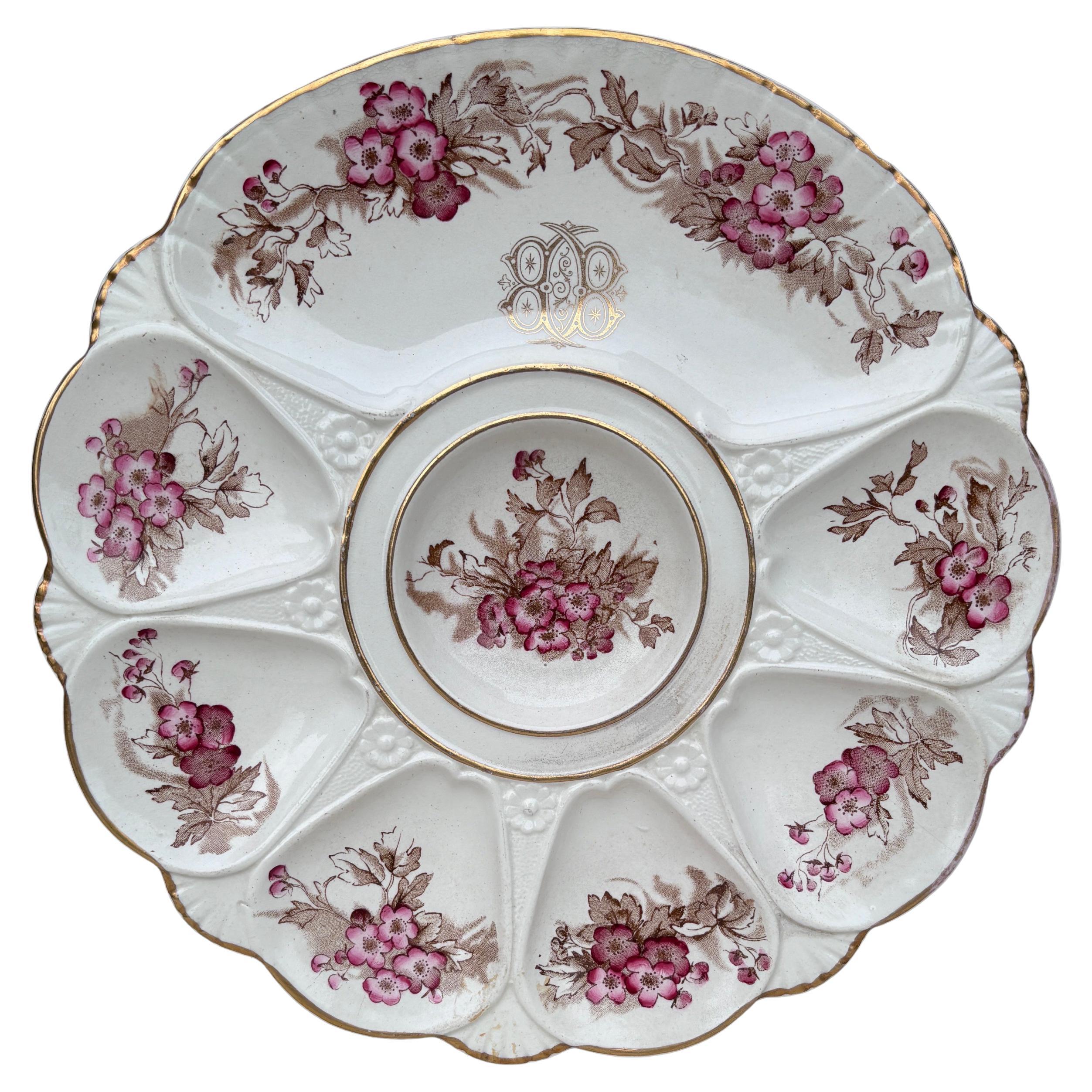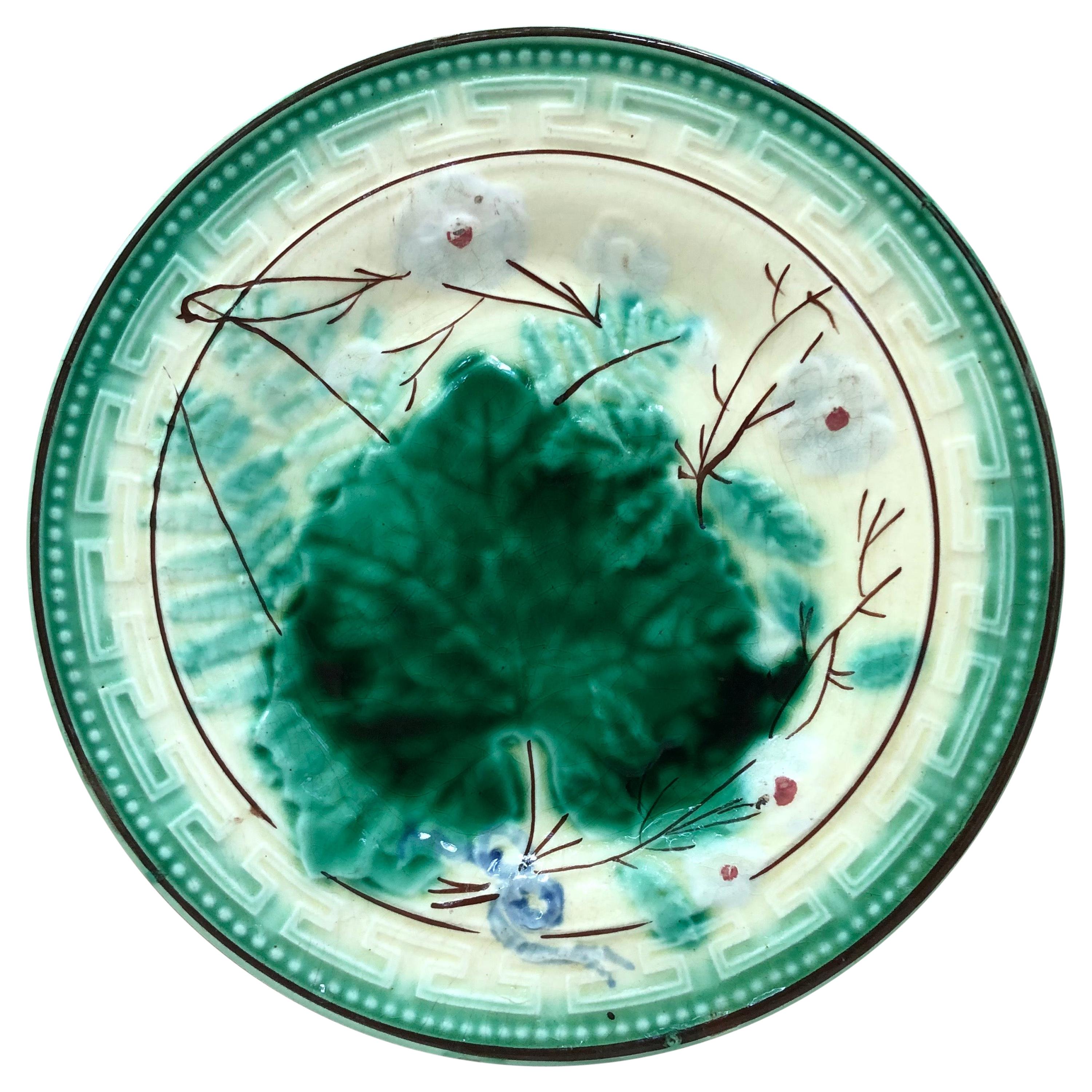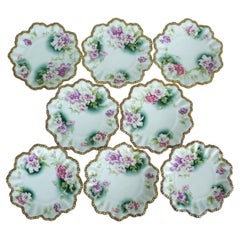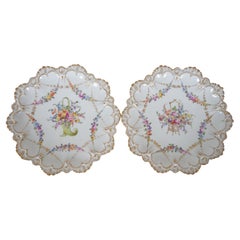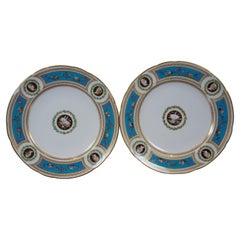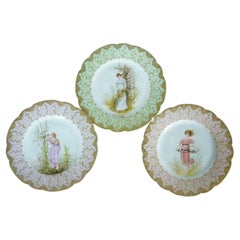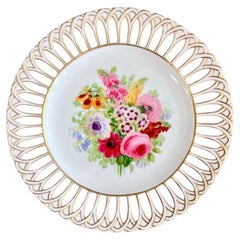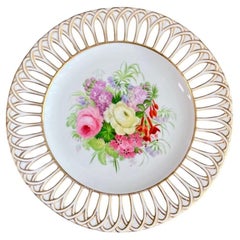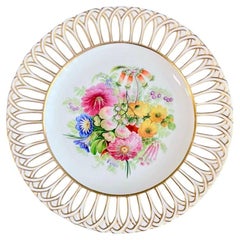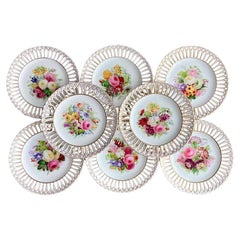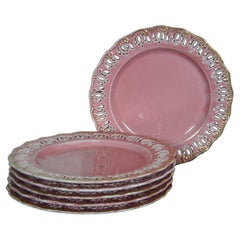
6 Austrian Hungarian Pink Scalloped Pierced Reticulated Lotus Flower Plates 8.5"
View Similar Items
Want more images or videos?
Request additional images or videos from the seller
1 of 11
6 Austrian Hungarian Pink Scalloped Pierced Reticulated Lotus Flower Plates 8.5"
About the Item
- Dimensions:Height: 0.5 in (1.27 cm)Width: 8.5 in (21.59 cm)Depth: 8.5 in (21.59 cm)
- Sold As:Set of 6
- Style:Late Victorian (Of the Period)
- Materials and Techniques:
- Period:
- Date of Manufacture:Late 19th Century
- Condition:Wear consistent with age and use. Good Overall - Some crazing; gentle wear.
- Seller Location:Dayton, OH
- Reference Number:Seller: 395521stDibs: LU5343237003842
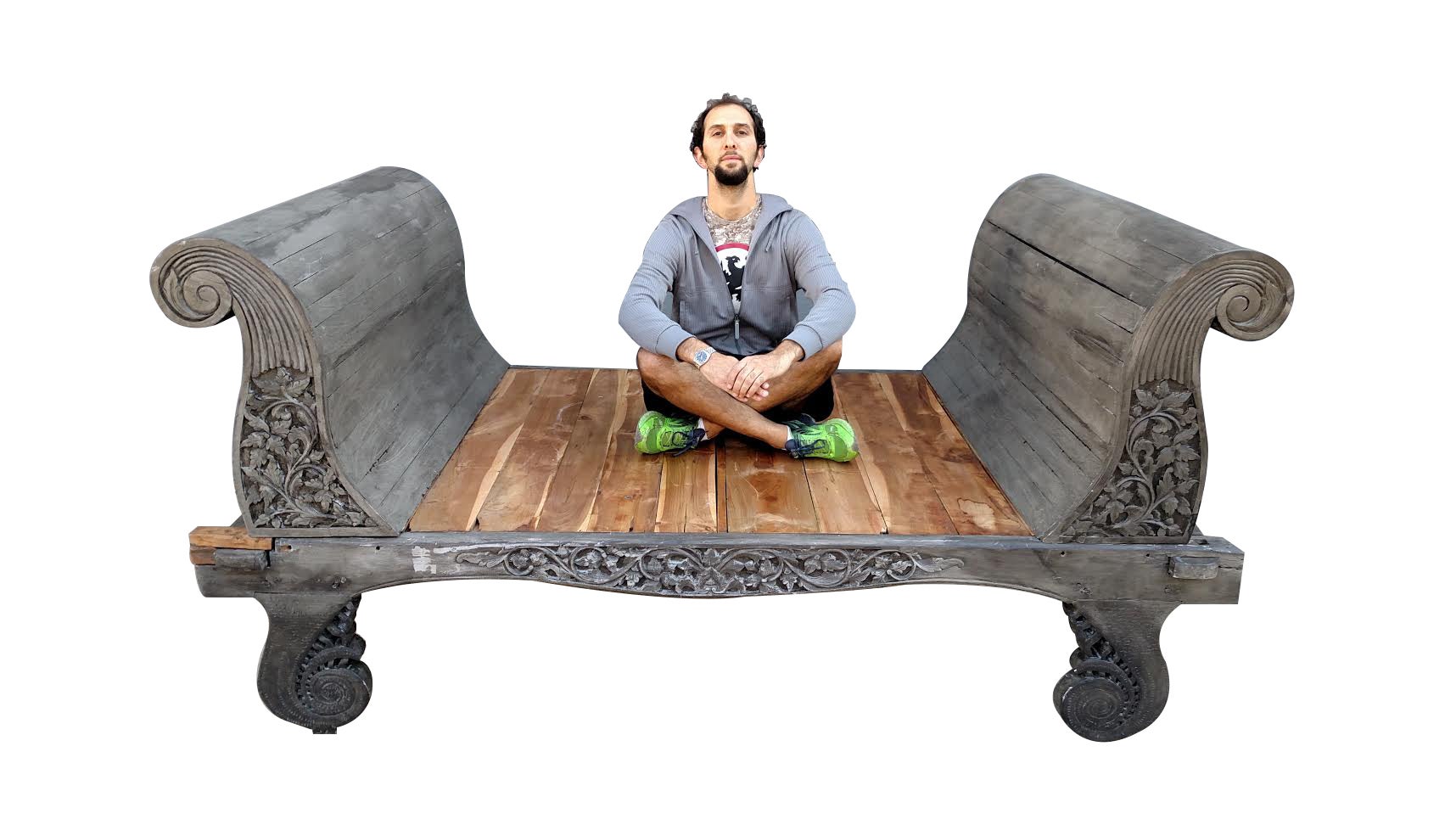
About the Seller
5.0
Platinum Seller
Premium sellers with a 4.7+ rating and 24-hour response times
Established in 2010
1stDibs seller since 2020
1,542 sales on 1stDibs
Authenticity Guarantee
In the unlikely event there’s an issue with an item’s authenticity, contact us within 1 year for a full refund. DetailsMoney-Back Guarantee
If your item is not as described, is damaged in transit, or does not arrive, contact us within 7 days for a full refund. Details24-Hour Cancellation
You have a 24-hour grace period in which to reconsider your purchase, with no questions asked.Vetted Professional Sellers
Our world-class sellers must adhere to strict standards for service and quality, maintaining the integrity of our listings.Price-Match Guarantee
If you find that a seller listed the same item for a lower price elsewhere, we’ll match it.Trusted Global Delivery
Our best-in-class carrier network provides specialized shipping options worldwide, including custom delivery.More From This Seller
View All8 Antique A. Lanternier French Limoges Scalloped Floral Porcelain Plates 8.5"
Located in Dayton, OH
Set of 8 late 19th - early 20th century A. Lanternier & Co Limoges porcelain plates with deeply scalloped and gilded edges resembling flower petals, echoing the green, pink, and purp...
Category
Antique Late 19th Century French Provincial Dinner Plates
Materials
Porcelain
$240 Sale Price / set
20% Off
2 Antique Franziska Hirsch Dresden Porcelain Polychrome Scalloped Floral Plates
Located in Dayton, OH
Pair of scalloped edge plates by Hirsch. Features a magnificent polychrome floral design.
Blank produced by MZ Austria (mark covered on base). Incised number 933.
Franziska Hirsch...
Category
Early 20th Century Dinner Plates
Materials
Porcelain
$240 Sale Price / set
20% Off
2 Antique 1862 Minton International Exhibition Jeweled Turquoise Plates
By Minton
Located in Dayton, OH
Pair of two Minton plates, circa 1862.
These superb quality Minton plates are from a dessert service shown at the International Exhibition of 1862 in London.
The plates testify to the enduring influence of 18th Century Sèvres on the tastes of Victorian high society. The designs are far from being mere copies, however; while there are recognisable Sèvres elements, they are arranged in entirely new and delightful ways.
On the rim are four imitation cameo heads of classical deities en grisaille on a red-brown ground, within oval reserves wreathed in laurel. The profiles are individually painted; compare, for instance, the winged helmeted heads of Hermes/Mercury and you will spot subtle differences. The cameo devices, used here for the first time by Minton, derive from the celebrated Sèvres dinner...
Category
Antique 1860s Victorian Dinner Plates
Materials
Porcelain
$940 Sale Price / set
20% Off
3 Antique Haviland & Co Limoges Royal Vienna Gold Encrusted Plates 9.5"
By Haviland & Co.
Located in Dayton, OH
Set of three circa 1876-1889 Haviland & Co Limoges porcelain plates featuring Royal Vienna baroque styling, gold encrusted swag floral / beaded borders of pastel green, pink, and pur...
Category
Antique Late 19th Century Baroque Dinner Plates
Materials
Porcelain
$240 Sale Price / set
20% Off
Antique Continental Thomas & Townsend Compton London Pewter Charger Plate 15"
By Townsend & Compton
Located in Dayton, OH
Late 18th early 19th century English Continental pewter charger / serving plate by Townsend & Compton (Thomas & Townsend Compton) of London. Round shape with recessed center and plai...
Category
Antique Late 18th Century Dinner Plates
Materials
Pewter
$280 Sale Price
20% Off
Meissen Reticulated Floral Insect Porcelain Oval Basket Dish 8.5"
By Meissen Porcelain
Located in Dayton, OH
Early 20th century Meissen porcelain dish. Oval form with pierced basket weave sides, scalloped edge, hand painted with gilded details and multicolored sprays of flowers and insects....
Category
Early 20th Century Serving Pieces
Materials
Porcelain
$280 Sale Price
20% Off
You May Also Like
Copeland Plate, Reticulated, Sublime Flowers by Greatbatch, 1848 (3)
By Copeland
Located in London, GB
This is a beautiful plate made by Copeland in 1848. It is decorated with a sublimely painted flower arrangement by the artist Greatbatch.
We have two sets of 8 of these plates available, as well as a few more separate ones; please see separate listings.
The Copeland factory was the third iteration of the famous Spode factory, after the "Copeland & Garrett" period which transitioned into the "Copeland" period in about 1833. The Spode/Copeland factory was one of the most prominent potteries right from the start of English porcelain production in the late 1700s to the demise of the industry in the 1960s and ultimate closure in the early 21st Century. In fact it was the founder Josiah Spode who was responsible for the recipe for bone china that made English china production so successful in the two centuries to come. Throughout all the changes, their items have always remained of exceptionally high quality and many of the designs have become iconic.
This plate was potted in fine white bone china, the rim meticulously reticulated in the "Gothic" shape. Reticulation was very time consuming and difficult, and just this detail would have made this plate expensive. The sublimely painted flower arrangement painted in the centre were done by Greatbatch, one of the well-known floral artists working for Copeland. Greatbatch was active between 1845 and 1860, and worked together with his brother R. Greatbatch, who was a talented gilder. They exhibited at the Great Exhibition of 1851.
This plate would have belonged to a sublimely expensive dessert service. It is stamped with the small blue Copeland mark with interlocking C's, and painted in red with the pattern number 7913, dating it at the year 1848.
Documentation: A plate of this service is shown on page 80 of Steven Smith's "Spode & Copeland: Over Two Hundred Years of Fine China and...
Category
Antique 1840s English Victorian Dinner Plates
Materials
Porcelain
Copeland Plate, Reticulated with Sublime Flowers by Greatbatch, 1848 (2)
By Copeland
Located in London, GB
This is a beautiful plate made by Copeland in 1848. It is decorated with a sublimely painted flower arrangement by the artist Greatbatch.
We have two sets of 8 of these plates available, as well as a few more separate ones; please see separate listings.
The Copeland factory was the third iteration of the famous Spode factory, after the "Copeland & Garrett" period which transitioned into the "Copeland" period in about 1833. The Spode/Copeland factory was one of the most prominent potteries right from the start of English porcelain production in the late 1700s to the demise of the industry in the 1960s and ultimate closure in the early 21st Century. In fact it was the founder Josiah Spode who was responsible for the recipe for bone china that made English china production so successful in the two centuries to come. Throughout all the changes, their items have always remained of exceptionally high quality and many of the designs have become iconic.
This plate was potted in fine white bone china, the rim meticulously reticulated in the "Gothic" shape. Reticulation was very time consuming and difficult, and just this detail would have made this plate expensive. The sublimely painted flower arrangement painted in the centre were done by Greatbatch, one of the well-known floral artists working for Copeland. Greatbatch was active between 1845 and 1860, and worked together with his brother R. Greatbatch, who was a talented gilder. They exhibited at the Great Exhibition of 1851.
This plate would have belonged to a sublimely expensive dessert service. It is stamped with the small blue Copeland mark with interlocking C's, and painted in red with the pattern number 7913, dating it at the year 1848.
Documentation: A plate of this service is shown on page 80 of Steven Smith's "Spode & Copeland: Over Two Hundred Years of Fine China and...
Category
Antique 1840s English Victorian Dinner Plates
Materials
Porcelain
Copeland dessert Plate, Reticulated, Sublime Flowers by Greatbatch, 1848 (1)
By Copeland
Located in London, GB
This is a beautiful plate made by Copeland in 1848. It is decorated with a sublimely painted flower arrangement by the artist Greatbatch.
We have two sets of 8 of these plates available, as well as a few more separate ones; please see separate listings.
The Copeland factory was the third iteration of the famous Spode factory, after the "Copeland & Garrett" period which transitioned into the "Copeland" period in about 1833. The Spode/Copeland factory was one of the most prominent potteries right from the start of English porcelain production in the late 1700s to the demise of the industry in the 1960s and ultimate closure in the early 21st Century. In fact it was the founder Josiah Spode who was responsible for the recipe for bone china that made English china production so successful in the two centuries to come. Throughout all the changes, their items have always remained of exceptionally high quality and many of the designs have become iconic.
This plate was potted in fine white bone china, the rim meticulously reticulated in the "Gothic" shape. Reticulation was very time consuming and difficult, and just this detail would have made this plate expensive. The sublimely painted flower arrangement painted in the centre were done by Greatbatch, one of the well-known floral artists working for Copeland. Greatbatch was active between 1845 and 1860, and worked together with his brother R. Greatbatch, who was a talented gilder. They exhibited at the Great Exhibition of 1851.
This plate would have belonged to a sublimely expensive dessert service. It is stamped with the small blue Copeland mark with interlocking C's, and painted in red with the pattern number 7913, dating it at the year 1848.
Documentation: A plate of this service is shown on page 80 of Steven Smith's "Spode & Copeland: Over Two Hundred Years of Fine China and...
Category
Antique 1840s English Victorian Dinner Plates
Materials
Porcelain
Copeland Set of 8 plates, Reticulated, Sublime Flowers by Greatbatch, 1848
By Copeland
Located in London, GB
This is a stunning set of 8 reticulated plates made by Copeland in 1848. Each plate is decorated with a unique sublimely painted flower arrangement by the artist Greatbatch.
We have a second set of 8 of these plates available, as well as a few separate ones; please see separate listings.
The Copeland factory was the third iteration of the famous Spode factory, after the "Copeland & Garrett" period which transitioned into the "Copeland" period in about 1833. The Spode/Copeland factory was one of the most prominent potteries right from the start of English porcelain production in the late 1700s to the demise of the industry in the 1960s and ultimate closure in the early 21st Century. In fact it was the founder Josiah Spode who was responsible for the recipe for bone china that made English china production so successful in the two centuries to come. Throughout all the changes, their items have always remained of exceptionally high quality and many of the designs have become iconic.
These plates were potted in fine white bone china, the rims meticulously reticulated in the "Gothic" shape. Reticulation was very time consuming and difficult, and just this detail would have made these plates expensive. The sublimely painted flower arrangements in the centre were done by Greatbatch, one of the well-known floral artists working for Copeland. Greatbatch was active between 1845 and 1860, and worked together with his brother R. Greatbatch, who was a talented gilder. They exhibited at the Great Exhibition of 1851.
These plates would have belonged to a sublimely expensive dessert service. They are all stamped with the small blue Copeland mark with interlocking C's, and painted in red with the pattern number 7913, dating it at the year 1848.
Documentation: A plate of this service is shown on page 80 of Steven Smith's "Spode & Copeland: Over Two Hundred Years of Fine China and Porcelain...
Category
Antique 1840s English Victorian Dinner Plates
Materials
Porcelain
Set of 8 Plates by Copeland, Reticulated, Sublime Flowers by Greatbatch, 1848
By Copeland
Located in London, GB
This is a stunning set of 8 reticulated plates made by Copeland in 1848. Each plate is decorated with a unique sublimely painted flower arrangement by the artist Greatbatch.
We have a second set of 8 of these plates available, as well as a few separate ones; please see separate listings.
The Copeland factory was the third iteration of the famous Spode factory, after the "Copeland & Garrett" period which transitioned into the "Copeland" period in about 1833. The Spode/Copeland factory was one of the most prominent potteries right from the start of English porcelain production in the late 1700s to the demise of the industry in the 1960s and ultimate closure in the early 21st Century. In fact it was the founder Josiah Spode who was responsible for the recipe for bone china that made English china production so successful in the two centuries to come. Throughout all the changes, their items have always remained of exceptionally high quality and many of the designs have become iconic.
These plates were potted in fine white bone china, the rims meticulously reticulated in the "Gothic" shape. Reticulation was very time consuming and difficult, and just this detail would have made these plates expensive. The sublimely painted flower arrangements in the centre were done by Greatbatch, one of the well-known floral artists working for Copeland. Greatbatch was active between 1845 and 1860, and worked together with his brother R. Greatbatch, who was a talented gilder. They exhibited at the Great Exhibition of 1851.
These plates would have belonged to a sublimely expensive dessert service. They are all stamped with the small blue Copeland mark with interlocking C's, and painted in red with the pattern number 7913, dating it at the year 1848.
Documentation: A plate of this service is shown on page 80 of Steven Smith's "Spode & Copeland: Over Two Hundred Years of Fine China and Porcelain...
Category
Antique 1840s English Victorian Dinner Plates
Materials
Porcelain
$7,500 / set
Free Shipping
Victorian Wedgwood Majolica Pheasant Plate Reticulated Rim
By Wedgwood
Located in Chelmsford, Essex
Wedgwood Majolica plate which features pheasants amongst foliage. Coloration: green, blue, ochre, are predominant. The piece bears maker's mark...
Category
Antique 1870s English Victorian Dinner Plates
Materials
Earthenware
